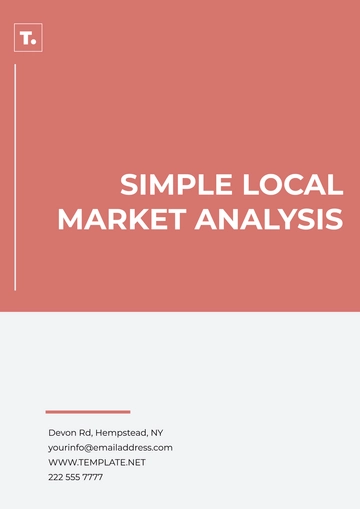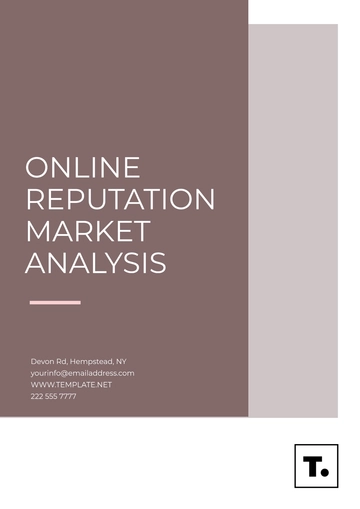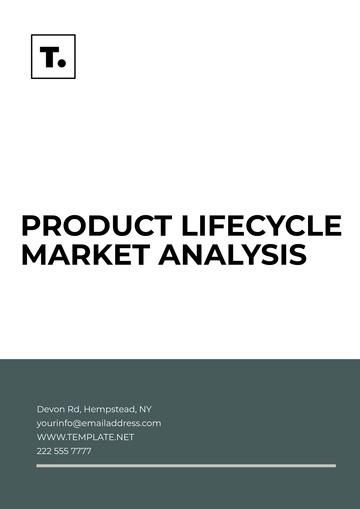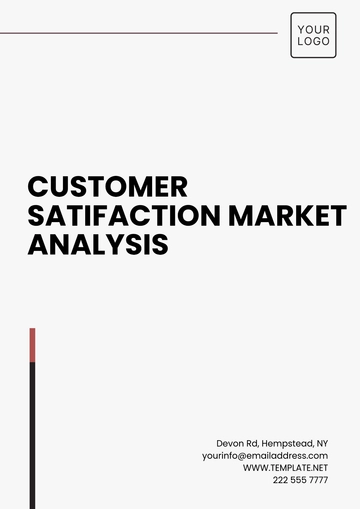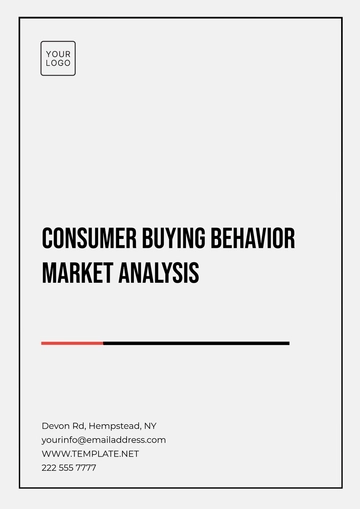Free Marketing Market Analysis Report for New Product
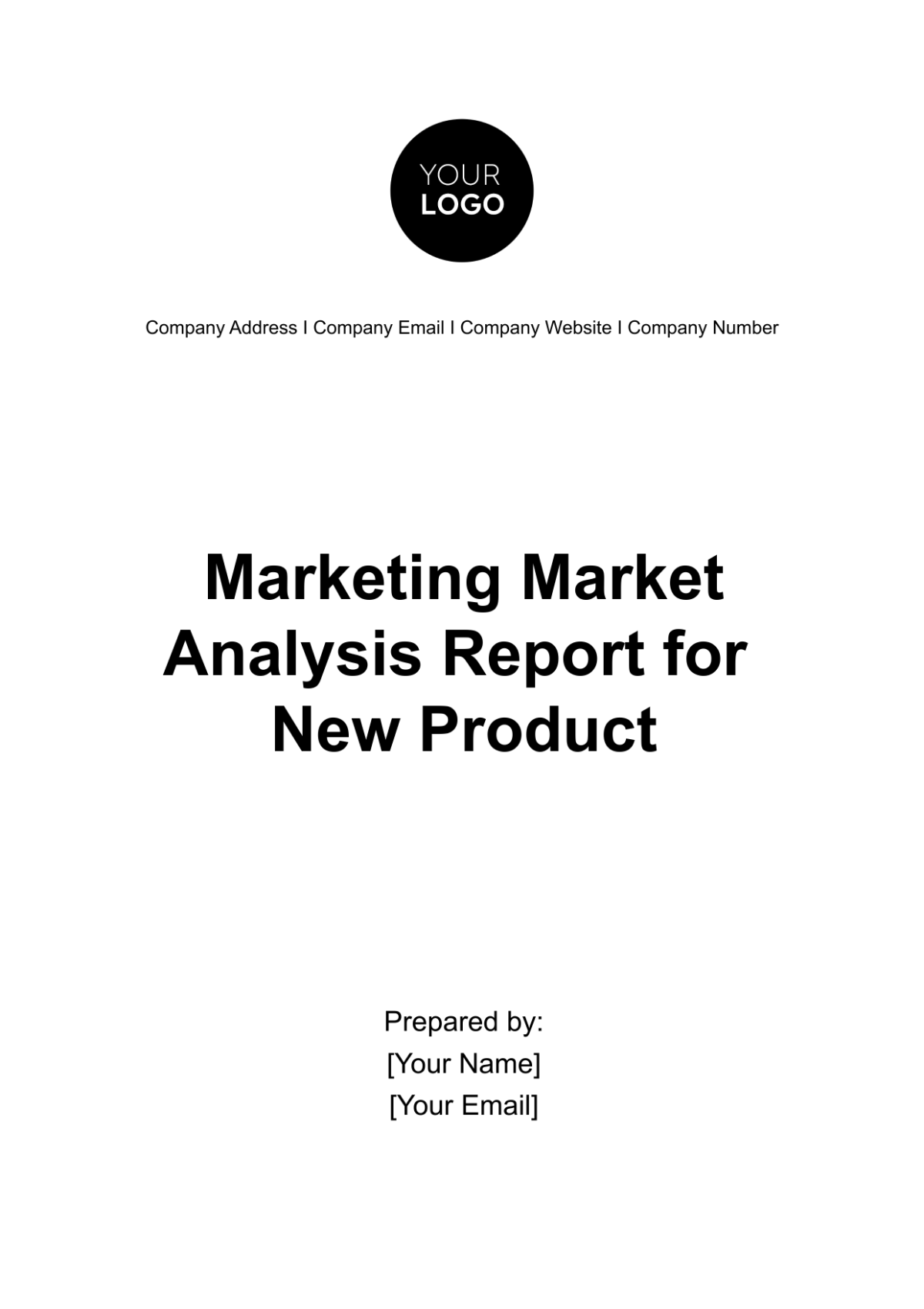
for New Product
Introduction
A. Background
Our company, [Your Company Name], has a long history of pioneering innovations in the tech industry. Our commitment to sustainability and environmental responsibility has led us to embark on the development of a groundbreaking solar-powered home heating system. This project stems from our dedication to providing eco-friendly solutions to meet the growing demand for clean energy alternatives.
B. Purpose
The purpose of this report is multifaceted:
To thoroughly examine the market landscape for solar home heating systems in 2050.
To identify opportunities, challenges, and potential pitfalls within the market.
To formulate a well-informed product launch strategy that maximizes market penetration and ROI.
To ensure that [Your Company Name] continues to be at the forefront of sustainable energy solutions.
This report will provide a comprehensive analysis of the market, competitive landscape, customer profiles, pricing strategies, and more, enabling us to make data-driven decisions as we introduce our new solar home heating system to the world. By understanding the market dynamics, we aim to position ourselves as a leader in the solar energy industry and contribute to a greener, more sustainable future.
Market Overview
A. Industry Trends
The renewable energy sector has witnessed remarkable growth in recent years, driven by increasing environmental concerns. In 2050, the industry is expected to continue its upward trajectory, with a projected annual growth rate of 8%.
Market Size and Growth
The global renewable energy market is estimated at $800 billion in 2050, with the solar heating sector accounting for 15% of this market. Projections indicate a 10% year-on-year growth for the next five years.
A. Market Segmentation
The market for solar home heating systems can be segmented into residential, commercial, and industrial sectors. Residential installations dominate, making up 70% of the market, while commercial and industrial sectors comprise 20% and 10%, respectively.
Competitive Analysis
A. Key Competitors
In the solar home heating system market, several key competitors have established themselves. These competitors have a significant presence and offer similar products and services. Some of the major competitors include:
[Competitor 1] | [Competitor 2] | [Competitor 3] |
Established player with a wide range of solar heating solutions. | Specializes in advanced solar thermal technology. | Focuses on eco-friendly solar heating options. |
Strong market presence in both residential and commercial sectors. | Extensive experience in large-scale industrial installations. | Strong customer base in residential markets. |
Known for innovative designs and high-quality products. | Known for energy-efficient solutions. | Competitive pricing strategies. |
B. SWOT Analysis
A SWOT analysis assesses the strengths, weaknesses, opportunities, and threats for [Your Company Name]'s solar home heating system.
Strengths:
Innovative technology with high energy efficiency.
Strong commitment to sustainability and eco-friendliness.
Established reputation for quality and reliability.
Weaknesses:
Limited market presence compared to key competitors.
Initial higher cost for customers.
Opportunities:
Growing demand for clean energy solutions.
Expansion into international markets.
Government incentives for renewable energy adoption.
Threats:
Intense competition in the solar heating sector.
Fluctuations in raw material prices.
Regulatory changes affecting the renewable energy industry.
Customer Analysis
A. Target Customer Profiles
Understanding our target customers is crucial for successful market entry. For our solar home heating system, we have identified two primary customer profiles:
Eco-Conscious Homeowners
Demographic: Age 30-60, middle to upper-middle income.
Psychographic: Values sustainability, eco-friendliness, and energy savings.
Pain Points: High utility bills, environmental concerns.
Commercial Property Managers
Demographic: Property managers of mid-sized to large commercial buildings.
Psychographic: Seeks cost-effective and sustainable heating solutions.
Pain Points: Rising energy costs, tenant satisfaction.
B. Customer Needs and Preferences
To effectively address our customers' needs, we conducted surveys and focus groups. The key findings are as follows:
Eco-Conscious Homeowners:
Priority: Energy efficiency and cost savings.
Preference: User-friendly control systems and remote monitoring.
Concerns: Upfront installation costs.
Commercial Property Managers:
Priority: Cost-effective, scalable solutions.
Preference: Integration with existing heating systems.
Concerns: Maintenance and ROI.
C. Buying Behavior
Our research indicates that both customer segments value product demonstrations, testimonials, and energy efficiency certifications when making purchase decisions. Additionally, government incentives and financing options play a significant role in their buying behavior.
Product Analysis
A. New Product Description
Our innovative solar home heating system, named [Product Name] represents a significant leap in solar thermal technology. Key features of [Product Name] include:
High Efficiency: [Product Name] boasts a solar thermal efficiency of 90%, significantly higher than competitors in the market. This ensures maximum energy savings for our customers.
Smart Integration: The system comes with a user-friendly smartphone app for remote monitoring and control, allowing homeowners to optimize their heating and maximize savings.
Scalability: [Product Name] is designed for scalability, making it suitable for both residential and commercial applications. It can be seamlessly integrated into existing heating systems.
B. Features and Benefits
The features of [Product Name] translate into compelling benefits for our customers:
Reduced Energy Costs: By harnessing the power of the sun, [Product Name] reduces heating costs by up to 40%, offering substantial savings over time.
Environmental Impact: Eco-conscious customers will appreciate the system's low carbon footprint, contributing to a greener planet.
Customization: [Product Name]'s smart controls allow users to tailor heating schedules to their preferences, ensuring comfort and convenience.
Marketing Strategy
A. Marketing Goals and Objectives
Our marketing strategy aims to achieve the following goals and objectives:
Goal 1: Market Penetration: We aim to capture a significant share of the residential and commercial solar home heating market within the next two years.
Goal 2: Brand Recognition: Establish [Your Company Name] as a trusted and innovative provider of solar heating solutions.
Objective 1: Increase brand awareness by 30% through targeted marketing campaigns.
Objective 2: Achieve a 15% increase in sales within the first year.
B. Product Positioning
[Product Name] will be positioned as a premium, high-efficiency solar home heating solution that offers both sustainability and cost-effectiveness. We will emphasize the following points:
High Efficiency: Highlighting its industry-leading efficiency compared to competitors.
Eco-Friendly: Emphasizing its low carbon footprint and environmental benefits.
User-Friendly: Showcasing the ease of use with the smartphone app.
C. Promotion and Advertising
Our promotional efforts will include:
Digital Marketing: Utilizing online channels, including social media, to reach our target customers and provide educational content on the benefits of solar heating.
In-Person Demonstrations: Hosting live product demonstrations at key events and trade shows to engage potential customers and build trust.
Partnerships: Collaborating with eco-friendly organizations and government bodies to leverage incentives and subsidies for solar heating adoption.
Customer Testimonials: Showcasing success stories and testimonials from early adopters to build credibility and trust in our product.
Online Sales Platform: Creating an e-commerce platform for direct sales and easy product access.
Sales Forecast
A. Sales Projections
To estimate the sales potential of [Product Name], we have prepared the following sales projections for the first three years after launch:
Year 1: We anticipate selling approximately 5,000 units, focusing on the residential market. Our marketing efforts will target eco-conscious homeowners seeking energy-efficient solutions.
Year 2: With increased brand recognition and positive customer feedback, we expect sales to double to around 10,000 units. We will also expand our marketing efforts to target commercial property managers.
Year 3: As the market continues to embrace solar heating, we project sales to reach 20,000 units. We will intensify our marketing campaigns, including international expansion.
B. Revenue Estimations
The revenue generated from [Product Name] sales is based on the unit price of $5,000 and the projected sales volumes for the first three years:
Year 1 Revenue: 5,000 units x $5,000 = $25,000,000
Year 2 Revenue: 10,000 units x $5,000 = $50,000,000
Year 3 Revenue: 20,000 units x $5,000 = $100,000,000
Sales Channels
Our sales strategy will utilize the following channels:
Direct Sales: We will sell directly to consumers through our e-commerce platform, offering a seamless purchasing experience.
Partnerships: Collaborations with solar installation companies and eco-friendly organizations will help expand our reach and provide installation services.
Retail Partnerships: Negotiating partnerships with home improvement stores to display and sell [Product Name] units.
Conclusion
Our analysis of the market for the [Product Name] reveals promising opportunities. The renewable energy sector, particularly solar heating, is experiencing rapid growth in 2050. Our product, [Product Name], stands out with its exceptional efficiency, eco-friendliness, and scalability. We have identified two key customer segments—eco-conscious homeowners and commercial property managers—and tailored our marketing strategy to address their unique needs and preferences.
Contact Information
For further inquiries or to discuss how [Product Name] can meet your solar heating needs, please do not hesitate to reach out to us:
[Your Company Name]
Address: [Your Company Address]
Email: [Your Company Email]
Phone Number: [Your Company Number]
Website: [Your Company Website]
Social Media: [Your Company Social Media]
For specific inquiries related to this report or to contact the author, please use the following:
Prepared by: [Your Name]
Email: [Your Email]
Marketing Templates @ Template.net
- 100% Customizable, free editor
- Access 1 Million+ Templates, photo’s & graphics
- Download or share as a template
- Click and replace photos, graphics, text, backgrounds
- Resize, crop, AI write & more
- Access advanced editor
Leverage the Marketing Market Analysis Report for New Product Template from Template.net to gain strategic advantages. This meticulously crafted resource offers comprehensive insights into market dynamics. Fully editable and customizable, tailor it precisely to your needs using our Ai Editor Tool. Drive success with data-driven strategies for new product launches.





